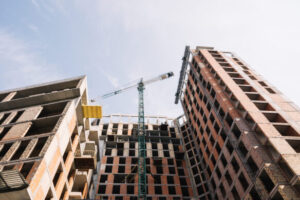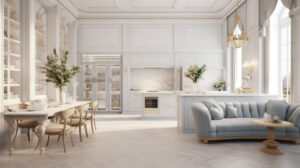While it’s safe to say that steel, bricks, and cement are essential for a building’s structural foundation, most people overlook one crucial material that adds to its integrity. We are talking about exterior cladding materials, that constitute a layer which not only improves the aesthetics of a structure but also protects against extreme weather conditions and wear and tear over time. From conventional choices like brick and wood to modern materials such as porcelain slabs, choosing the right exterior cladding material can significantly affect the lifespan and strength of your building. In this blog, we’ll dig into why your choice of exterior facade materials requires more consideration and thought.
Strengthens the structural integrity
Beyond its cosmetic appeal, facade cladding serves a crucial role in strengthening the basic foundation of a building. Acting as a defensive shield, it protects the fundamental structure from dampness, temperature fluctuations, and other climatic conditions that can compromise its integrity over time. By providing an extra layer of protection, a high-quality building facade material can reduce the chances of structural damage, prolonging the life span and safety of the building.
Long-Term Maintenance Cost
Choose a facade material that is low-maintenance and also offers long-term durability. Facade cladding materials like wood, ACP sheets, or paint might be comparatively low on your pocket initially, but they require retouching or repair every few years. On the other hand, porcelain slabs do not require any regular maintenance and come with a lifetime warranty, making them a one-time solution for a longer period of time.
Beauty is better when it’s long-term
While aesthetic considerations are the primary factors in picking the right exterior cladding material, it’s essential to prioritize long-term strength and performance. Unlike interiors that can be effectively upgraded or renovated, building facade material is a long-term investment that impacts the building’s visual representation and is inconvenient to renovate on a regular basis. Choosing a facade material known for its durability guarantees that your building will maintain its engaging quality and significance for a long time to come.
Traditional materials such as natural stone, brick, or wood will offer you a classic appeal that won’t lose its charm over time. However, modern materials like porcelain slabs or composite panels can provide modern aesthetics without compromising on durability and longevity, along with additional protection for a building.
The Choice of Materials According to the Building’s Functionality
Different types of buildings have specific requirements in terms of performance, maintenance, and environmental impact. Therefore, careful consideration while choosing the right cladding material becomes extremely important.
For commercial buildings, durability and low maintenance are often top priorities. Materials like precast concrete panels, metal cladding, or porcelain slabs offer excellent durability and require minimal upkeep, making them suitable for busy commercial environments.
In residential buildings, energy efficiency, noise reduction, and thermal comfort may take precedence. Insulated cladding systems, such as EIFS (Exterior Insulation and Finish System) or fibre cement siding, provide excellent thermal performance and sound insulation, enhancing the livability of the space and reducing energy costs for homeowners.
For institutional or public buildings, accessibility, sustainability, and safety may drive material selection. Materials like recycled glass panels, responsibly sourced timber, or bio-based composites offer environmentally friendly alternatives that align with sustainability goals and regulatory requirements.
Ultimately, the choice of exterior cladding material should meet the objectives of the building project, balancing aesthetics with functionality, durability, and sustainability. By carefully considering these factors and selecting a material that aligns with the building’s functionality, you can ensure that your project achieves its intended goals while enhancing its long-term value and performance.

Building materials are essential components that form the backbone of any construction project. They

Interior design can be defined as a comprehensive set of activities carried out based on the tastes

It is a fact that sanitary wares basically comprises of some bathroom fixtures and even fittings tha